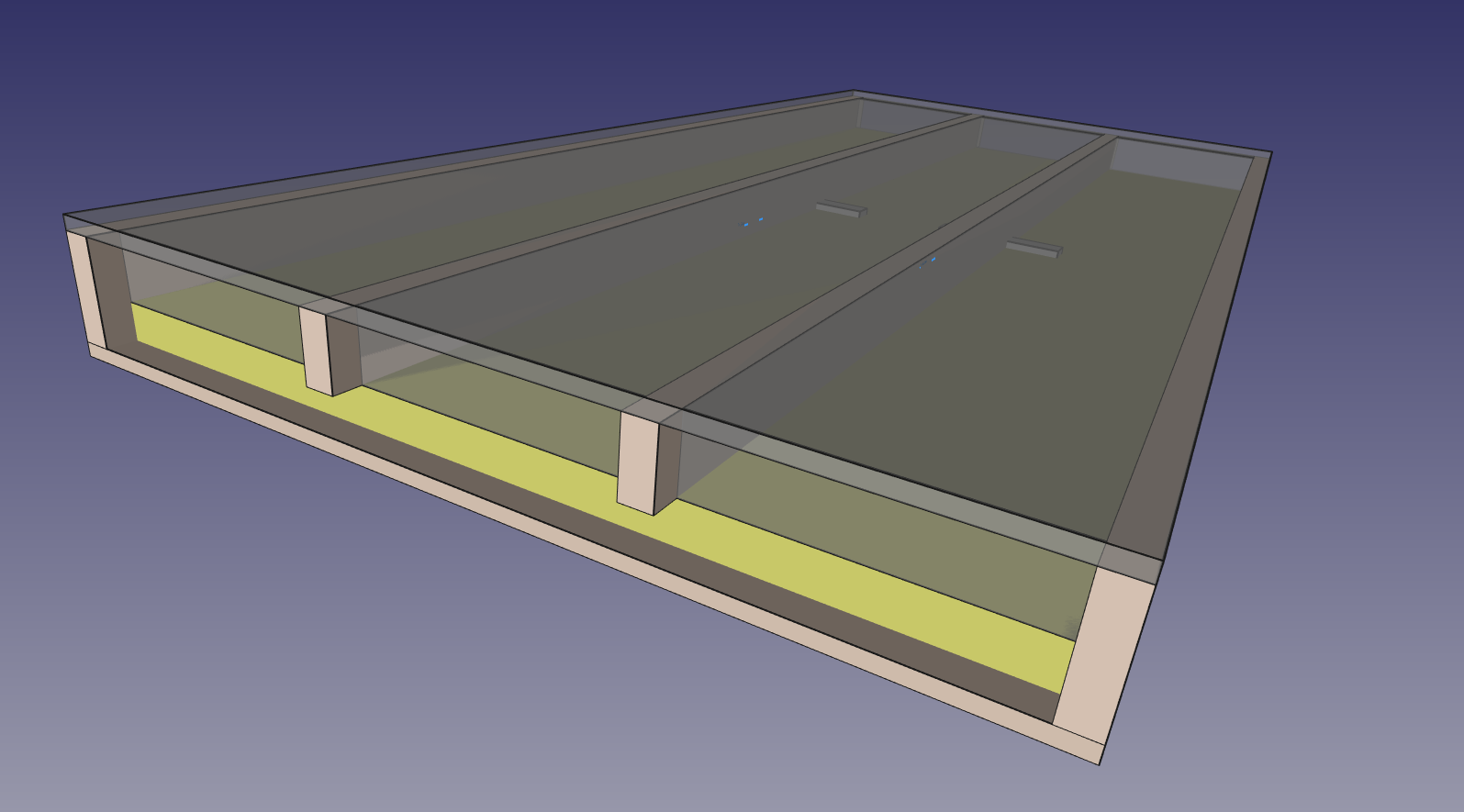This week, I threw up my hands in frustration and did a small redesign. I have been planning all along to use SIPs for the first floor flooring (above the basement). Unfortunately, I have been so busy with other projects like fencing our back yard against deer and dealing with my duties as volunteer Treasurer for my community, that I didn’t actually get an order placed. Add to this that the time frame for getting SIPs delivered turned out to be 3-4 weeks ARO (“after receipt of order”), this would have put me receiving the materials somewhere around when the average daily high temperature crosses below 50°F/10°C and the snow starts to fly. Plus, the quotation came in about $2,000 over my budgetary estimate. I could save some of this by using a lower insulation SIP – which would probably be OK – as the basement will generally stay closer to ground temperature than outdoor temperature, I won’t lose as much heat through the floor as through the walls.
The local code enforcement officer indicated that I needed to either get a floor in place or put up a (rather permanent-sounding) fence around the site before the winter, and I didn’t want to spend a whole lot of money on fencing if I could just get the floor on.
To top it off, I was having trouble getting a useful structural load analysis that reflected my intended usage. Somewhere in here, while I was busy trying to compute the transverse load for a 4′ span from the modulus of elasticity of extruded polystyrene, I turned a corner. Was this really worth going out on a limb and then jumping from treetop to treetop over? Load tables and beam strength calculations for wooden joists were incredibly easy to come by. And they showed that all it would take was a 2×6 member spaced every 24″1 to span over 8 feet. Heck, even a measly 2×4 would span 5 feet. If these were then reinforced with a bottom layer of plywood (which would effectively prevent the bottom of the beams from stretching and make them even stronger) and topped with subflooring, I would have a structurally sound flooring solution.
It would need to be insulated though. Polyisocyanurate foam board (often abbreviated PIR) is about the best insulation density you can get in an off-the-shelf product (R-6.5 per inch) and so 4 inches of this would put me at R-26 – exactly where the cheaper SIPs would have put me. However, that would involve a lot of cutting foam to fit around the structural members. I was also worried about the thermal bridging from all of the wood, particularly if I needed to space the joists 16″ OC to ensure a rigid floor and not need multiple layers of subflooring to achieve it.
I finally came up with what seemed like the key innovation to me. If a 2×4 can span over 5′ at 24″ OC or nearly 6′ at 16″ OC, then as long as it’s structurally supported every 4′ or 5′, the 2×4 can actually serve the role as a floor joist. Adding a 2×6 for every 3rd member would increase the strength further. The PIR foam board I was looking to use2 is 2″ thick, meaning that it would in principle fit in the difference between a 3.5″ 2×4 and a 5.5″ 2×6, and from there it would actually provide some additional support to the 2×4. At this point I could get away with only cutting each PIR board a little bit to fit between 2×6 members, and around the supports.
But now I’m only at R-13! That isn’t very good insulation for a potential 25°F/14°C temperature differential. Adding batts of 3.5″ rock wool, which is exactly designed for 2×4 spaces, adds another R-15 (total R-28). The final assembly looks something like what is shown here.
And, I should be able to start getting the parts more-or-less immediately. And, the whole thing will probably save me some money relative to even the cheapest of the SIPS. Some extra labor, to be sure, but the sooner I can get started on it, the more likely I am to get this done before real winter hits.
A little afterword about the R-value. Using data on individual components I’m estimating the average R-value for the entire floor at 25.9. It’s interesting to see that 77% of the heat loss is through the two layers of insulation; 14% of it is through the 2×6 joists; and 8% of it is through the 2×4 joists. Thus even though the 2×6 joists account for less than 5% of the total area, they’re responsible for a significant fraction of the heat loss. If I had used 2×6 everywhere, the R-value would have been lowered to 23.6 (almost 10% worse) and the joists would have been 30% of the loss.